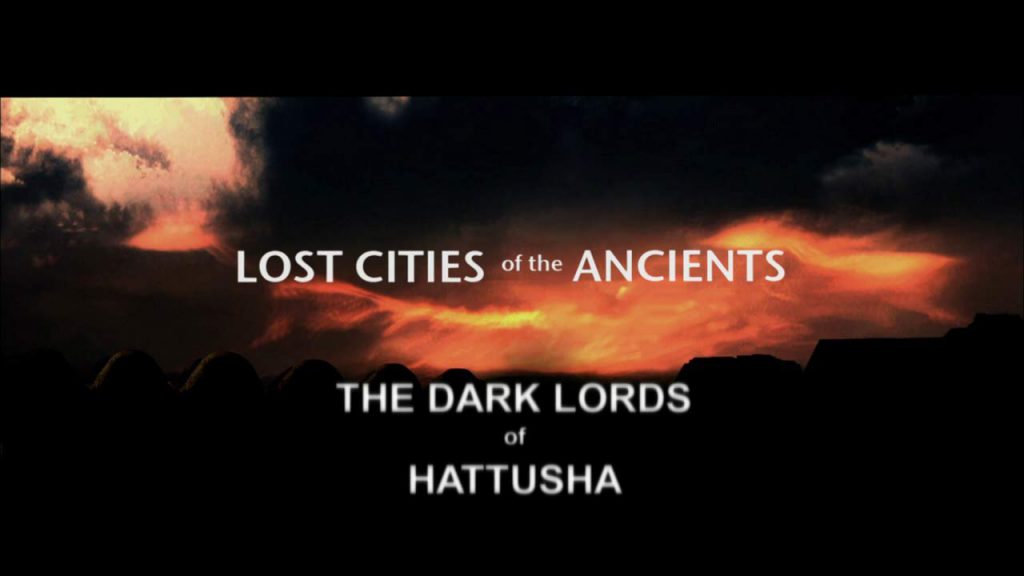Lost Cities of the Ancients episode 3: Hattusha – The story of the formidable Hittite empire and the rediscovery of their astonishing capital, Hattusha. It was one of the greatest vanishing acts in history. More than 3,000 years ago a mysterious and ruthless civilisation rose from nothing, created a brutal and unstoppable army and built an empire that rivalled Egypt and Babylon. Yet, just as it was at the height of its powers, the great empire suddenly vanished from history.
This is the story of the formidable Hittites, a civilisation bent on world domination. Their long-lost capital, Hattusha, which disappeared thousands of years ago, was recently rediscovered, and archaeologists have unearthed one of the most astonishing and ingenious cities of the ancient world, featuring rings of impenetrable walls, secret tunnels, temples, palaces and a vast pyramid-like structure facing Egypt.
Buried in this lost city is one of the greatest libraries of the ancient world. All the secrets of the mysterious Hittite empire were written in two codes – one a unique form of hieroglyphs. Using these deciphered texts, the film recreates the ancient world of the Hittites, telling the story of what happened to them, and what caused an empire built to last forever to vanish so completely from history.
Lost Cities of the Ancients episode 3: Hattusha
Hattusa was the capital of the Hittite Empire in the late Bronze Age. Its ruins lie near modern Boğazkale, Turkey, within the great loop of the Kızılırmak River (Hittite: Marashantiya; Greek: Halys). Hattusa was added to the UNESCO World Heritage Site list in 1986.
The landscape surrounding the city included rich agricultural fields and hill lands for pasture as well as woods. Smaller woods are still found outside the city, but in ancient times, they were far more widespread. This meant the inhabitants had an excellent supply of timber when building their houses and other structures. The fields provided the people with a subsistence crop of wheat, barley and lentils. Flax was also harvested, but their primary source for clothing was sheep wool. They also hunted deer in the forest, but this was probably only a luxury reserved for the nobility. Domestic animals provided meat.
There were several other settlements in the vicinity, such as the rock shrine at Yazılıkaya and the town at Alacahöyük. Since the rivers in the area are unsuitable for major ships, all transport to and from Hattusa had to go by land.
Before 2000 BC, the apparently indigenous Hattian people established a settlement on sites that had been occupied even earlier and referred to the site as Hattush. The Hattians built their initial settlement on the high ridge of Büyükkale. The earliest traces of settlement on the site are from the sixth millennium BC. In the 19th and 18th centuries BC, merchants from Assur in Assyria established a trading post there, setting up in their own separate quarter of the city. The center of their trade network was located in Kanesh (Neša) (modern Kültepe). Business dealings required record-keeping: the trade network from Assur introduced writing to Hattusa, in the form of cuneiform.




